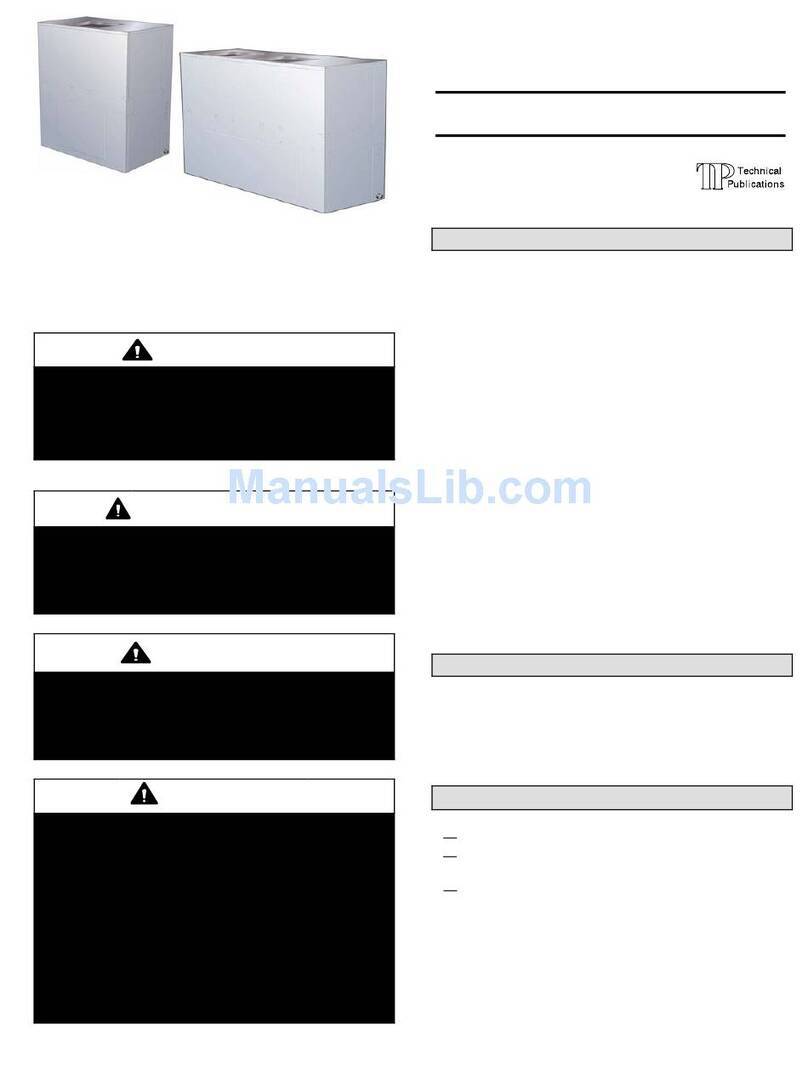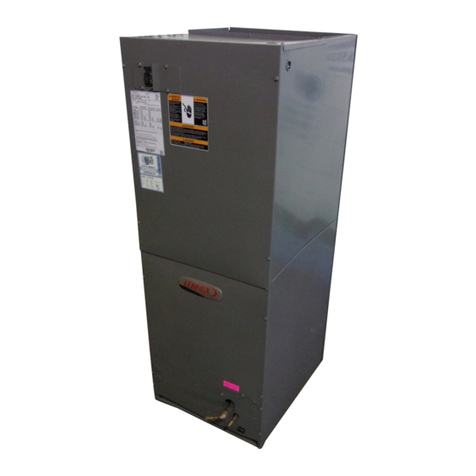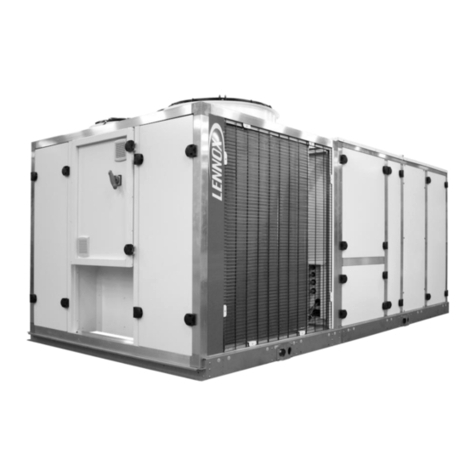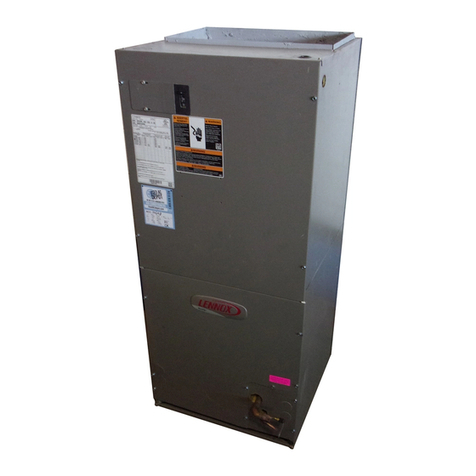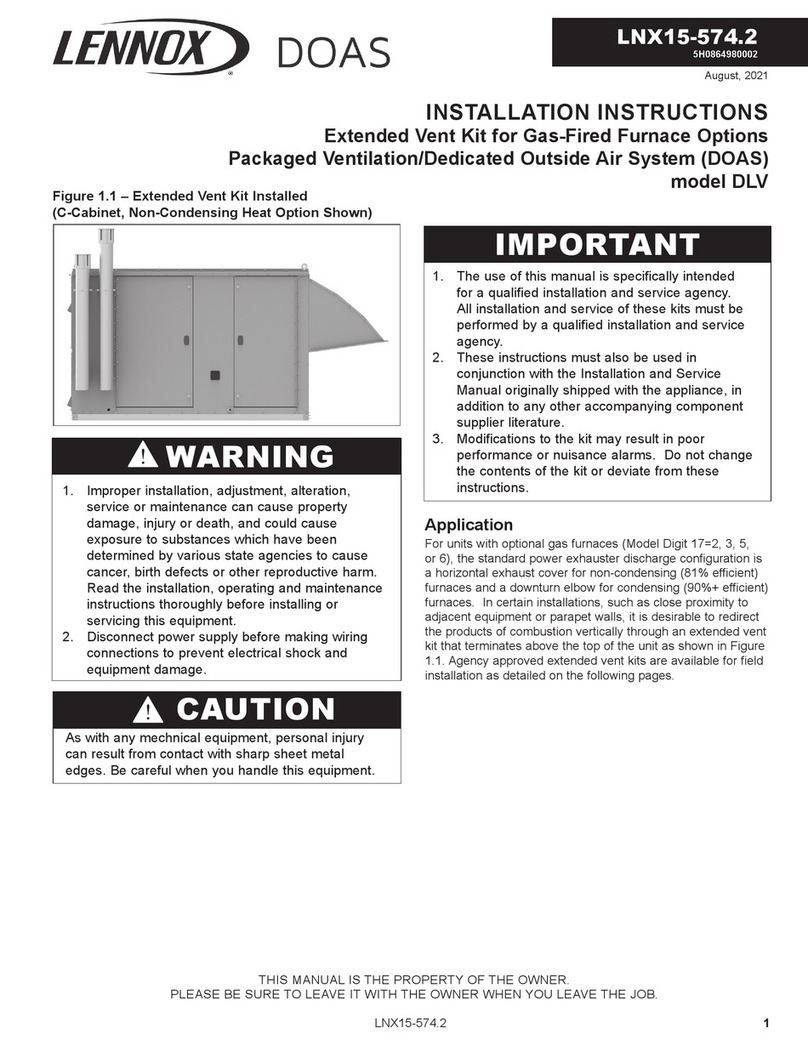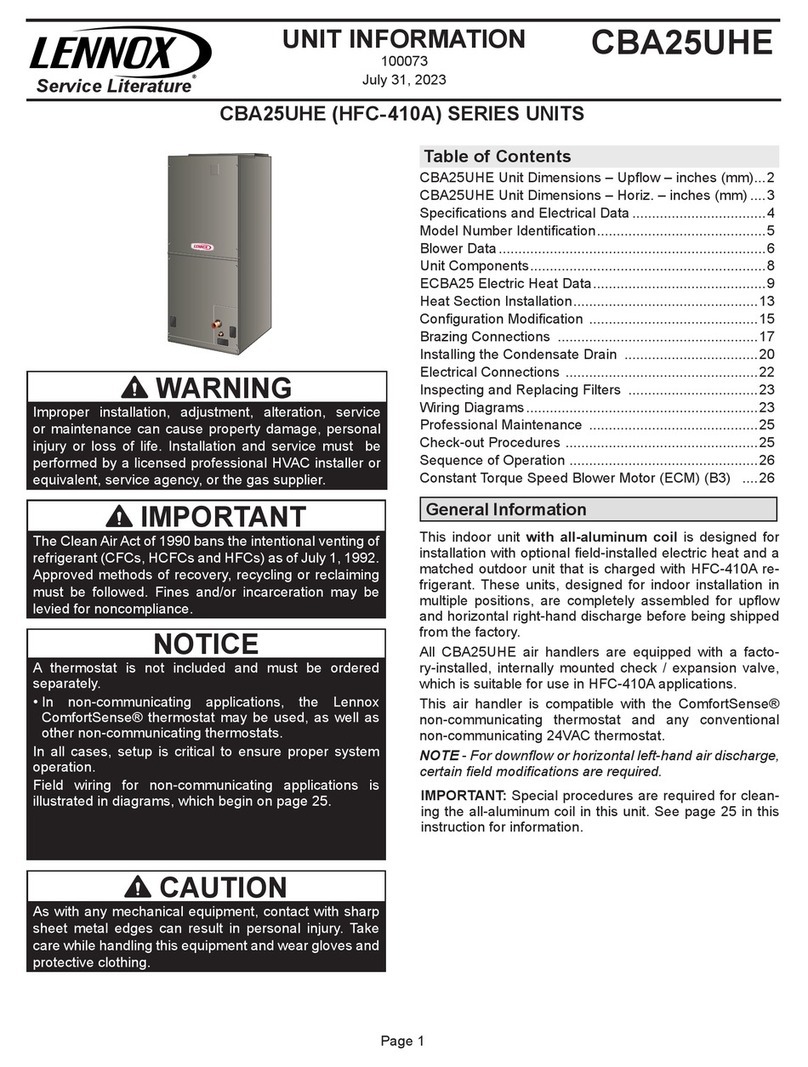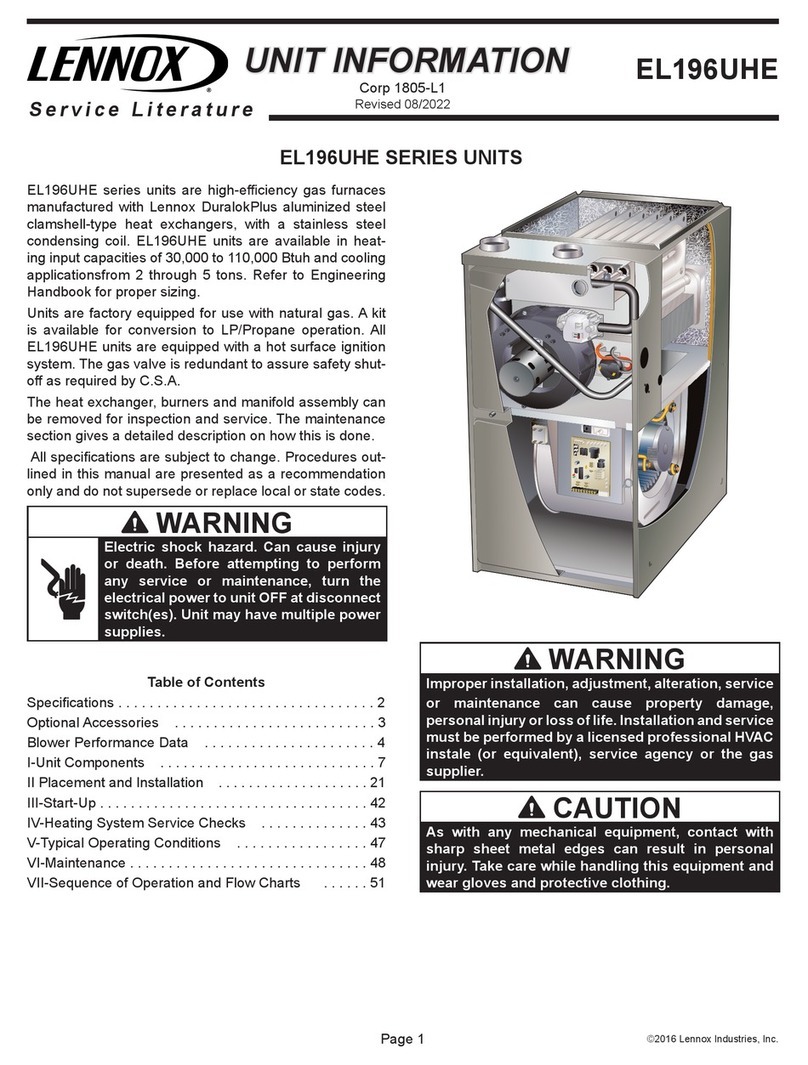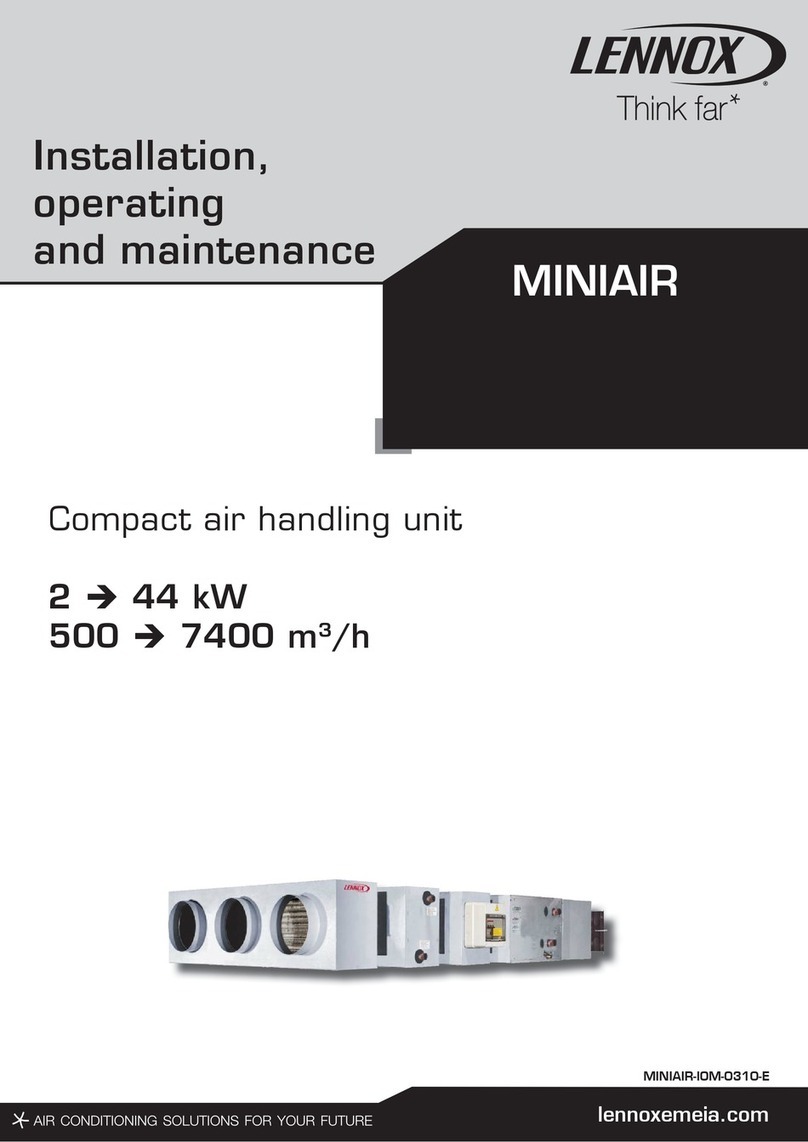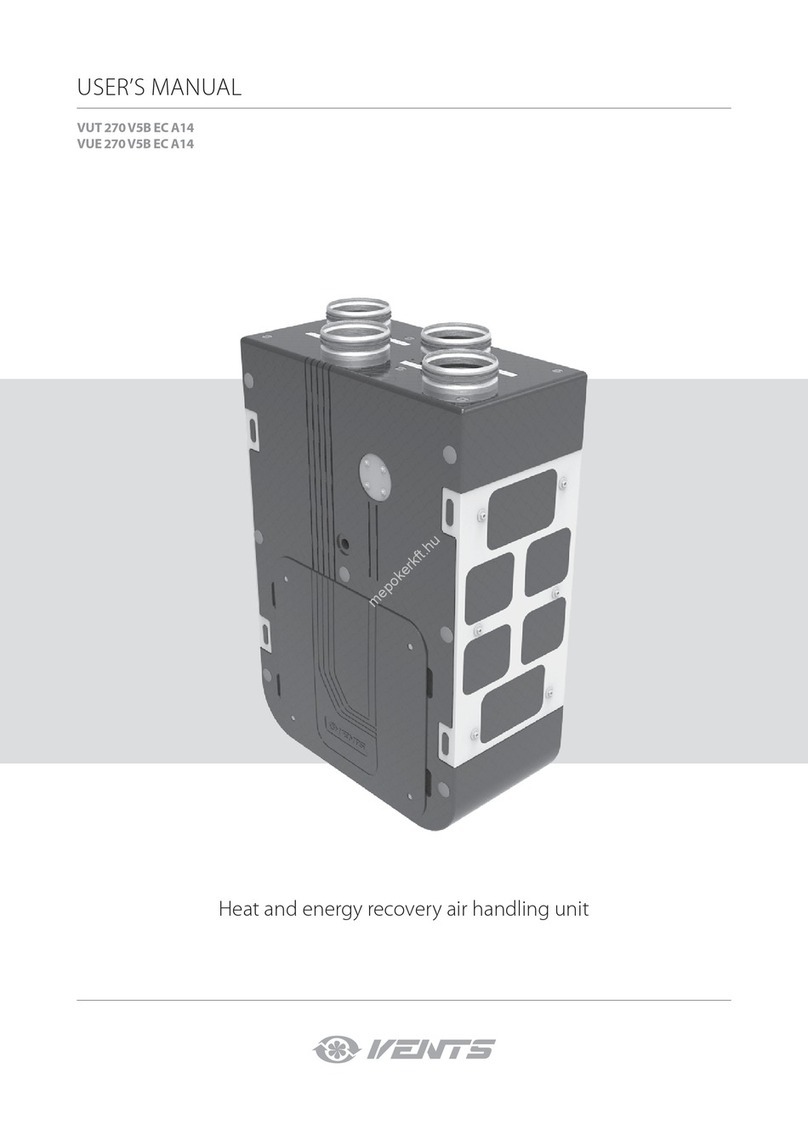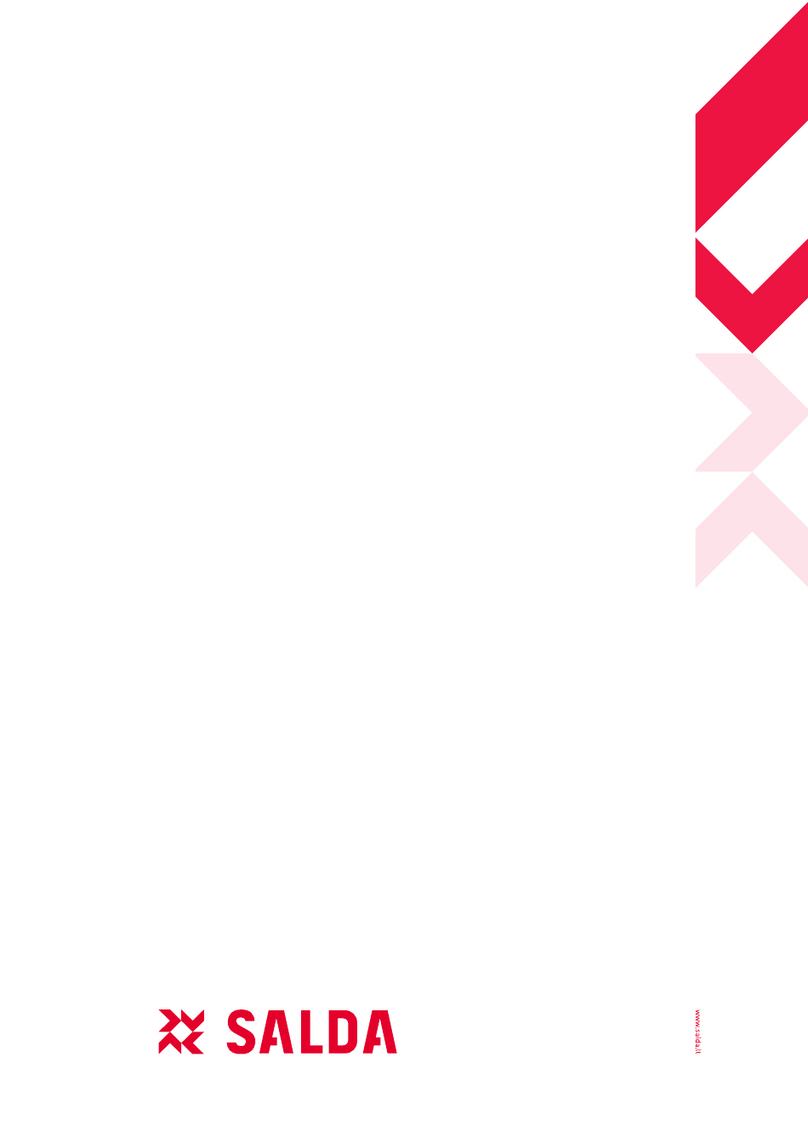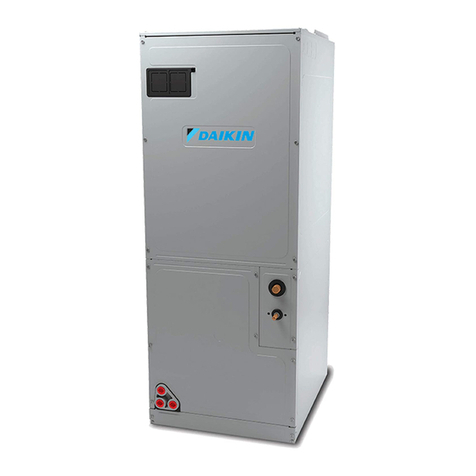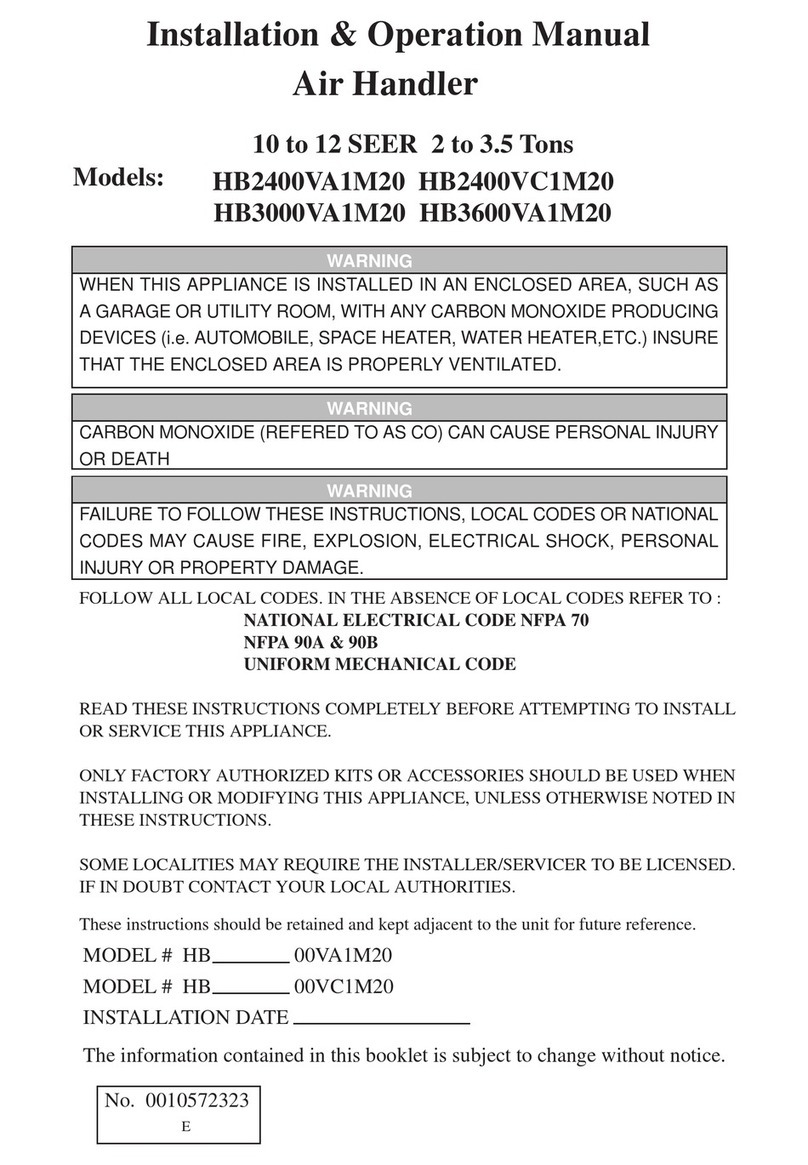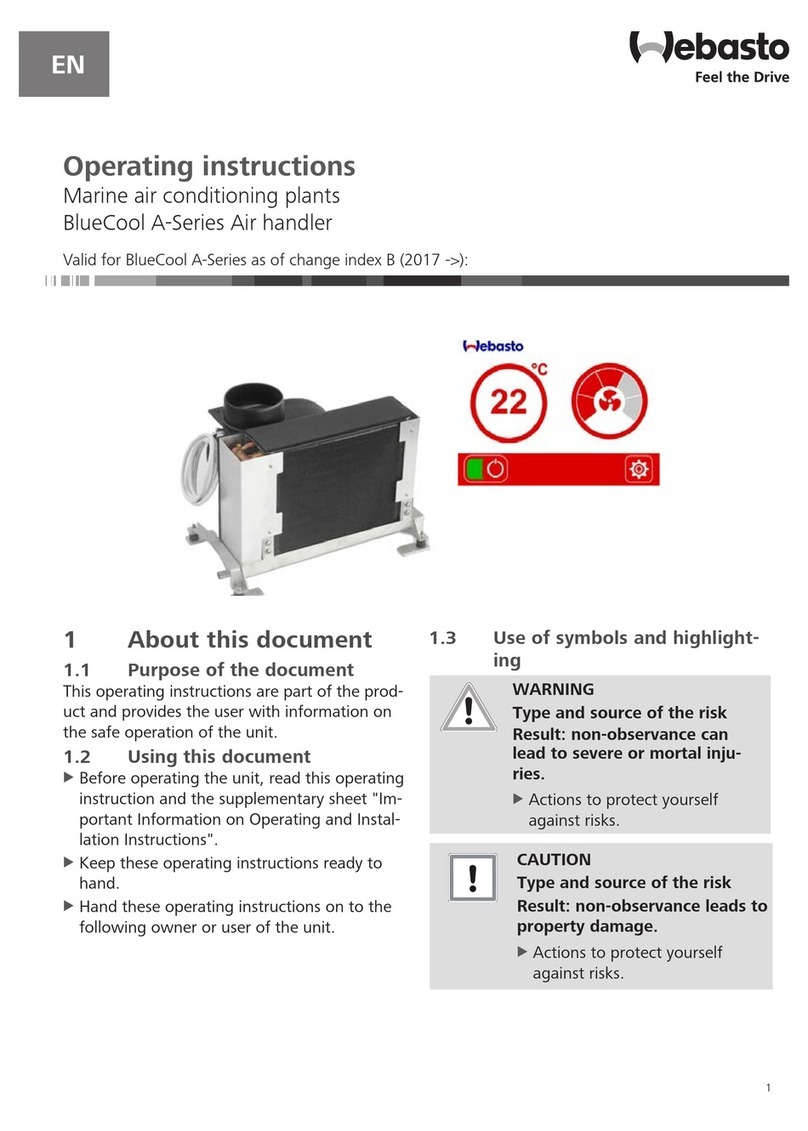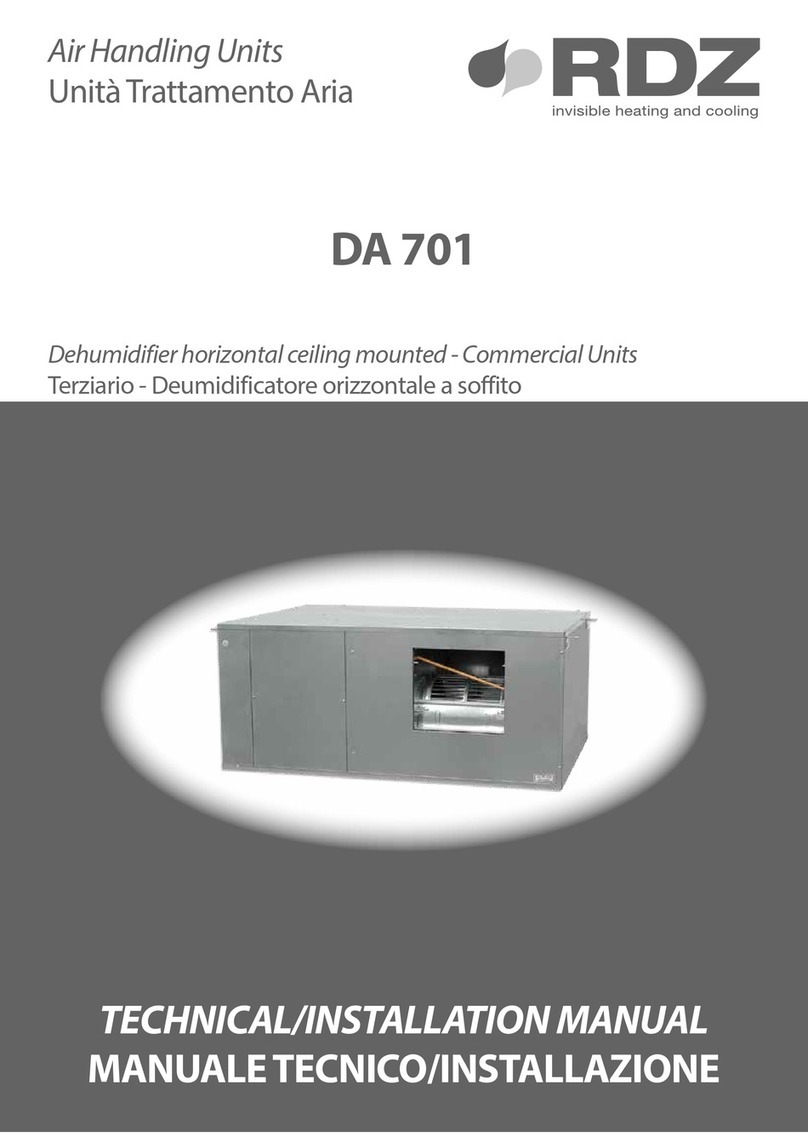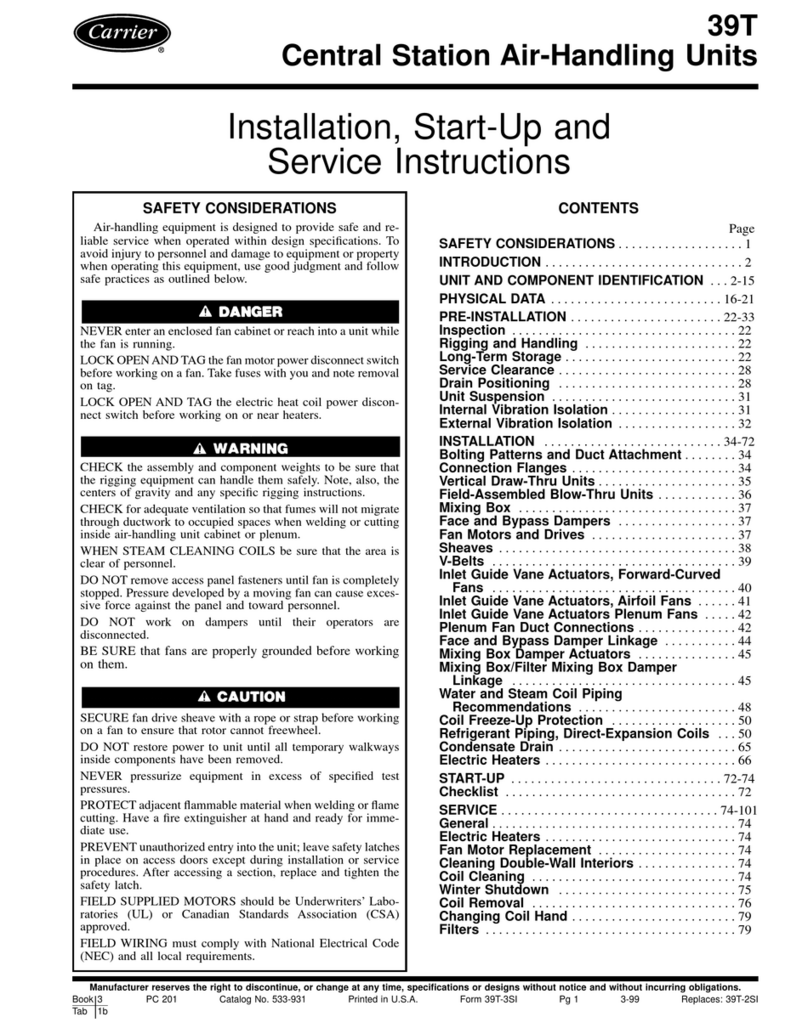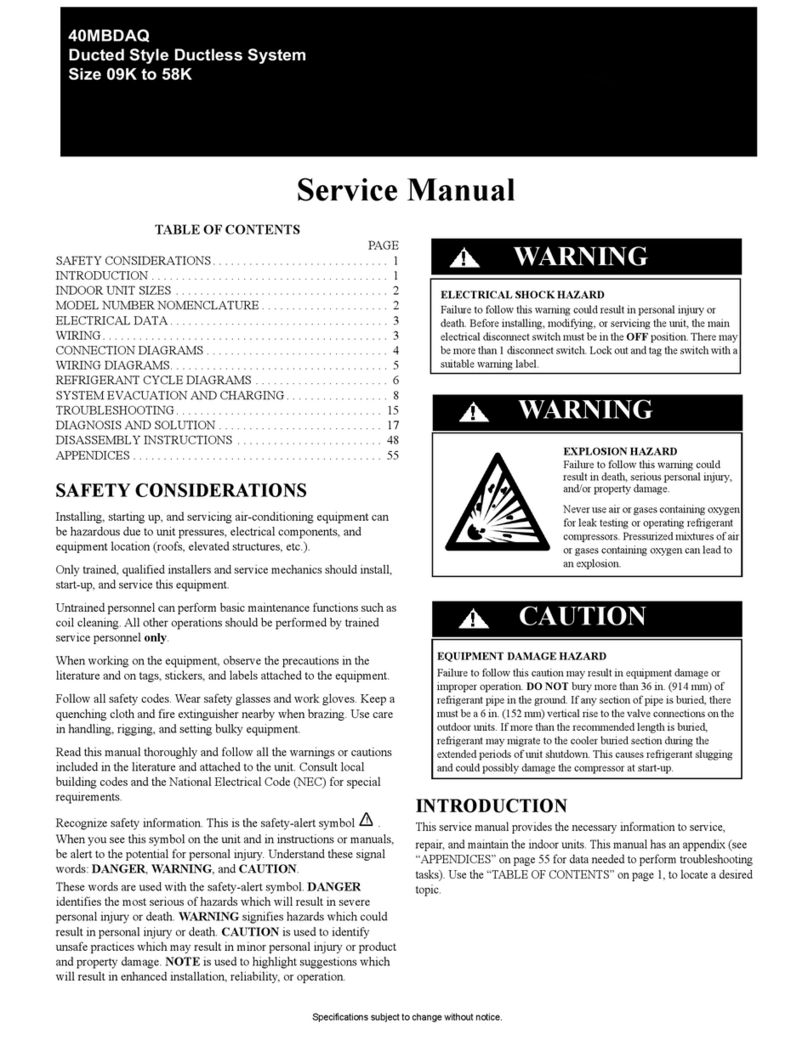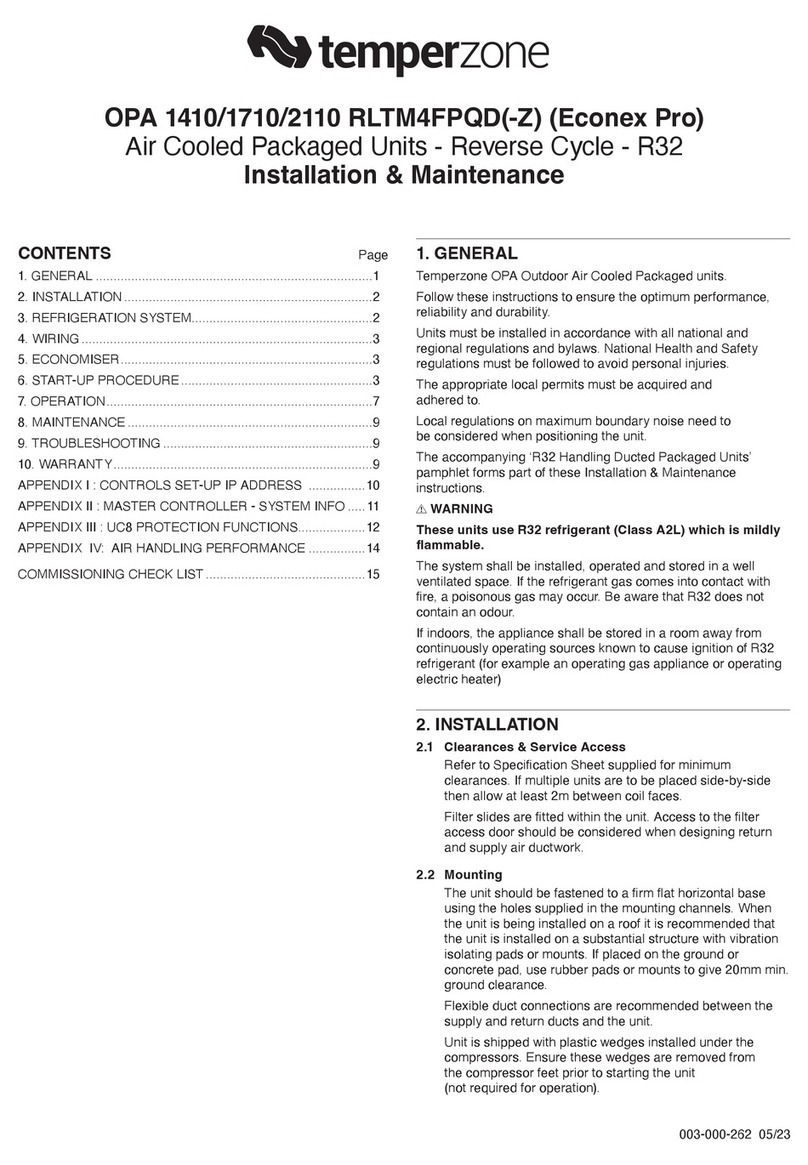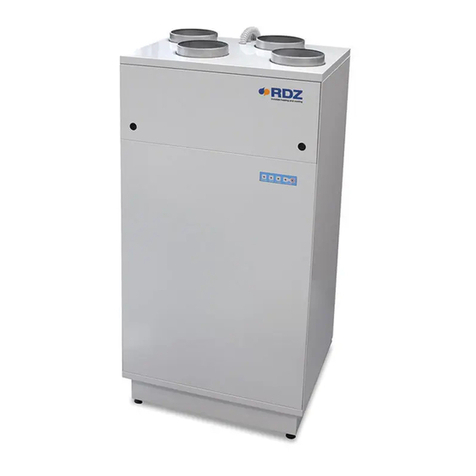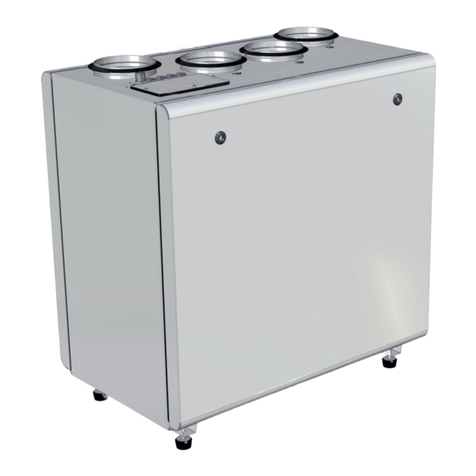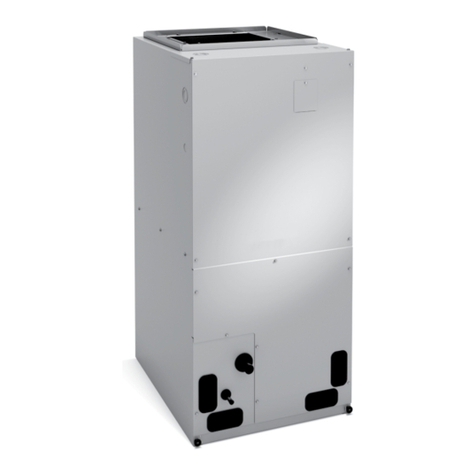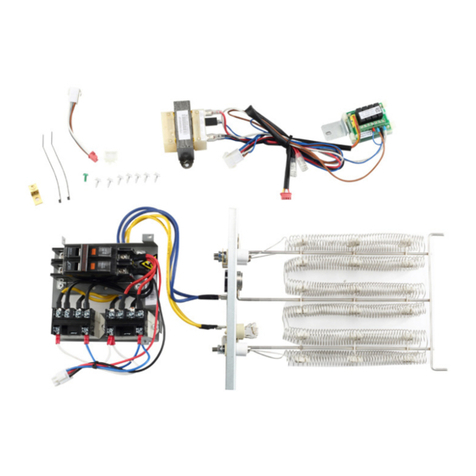
NOTE -CB3OMV series evaporators use nitrogen or dry air
as a holding charge. If there is no pressure when the rubber
plugs are removed, check the coil or line set for leaks before
installing. After installation, pull a vacuum on the line set and
coil before releasing the unit charge into the system.
NOTE: See outdoor unit instructions on how to flow
nitrogen through line sets.
Step 1. Remove access panel,
Step 2, Remove the refrigerant line caps from the
refrigerant lines,
Step 3, Use a wet rag to protect TXV sensing bulb (or
remove it) when brazing suction line
connections,
Step 4, Place a wet rag against piping plate and around
the suction line connection. The wet rag must be
in place to guard against damage to the paint.
Step 5, With the wet rag in place, position field provided
elbow fitting to air handler's suction line and line
set, Start nitrogen flow before brazing.
Step 6, After the procedure is completed then remove
the wet rag,
Step 7, Place wet rag against piping plate and around
the liquid line connection. Position liquid line
elbow to air handler's suction line and to line set.
Start nitrogen flow and begin brazing both
connections and after procedure is completed
then remove both wet rags,
Step 8, Refer to instructions provided with outdoor unit for
leak testing, evacuating and charging
procedures,
Step 9. Install access panel,
Connect the main condensate drain and route it downward
to an open drain or sump. Do not connect the drain to a
closed waste system. Refer to figure 3 for a typical
condensate trap configuration. If the auxiliary drain is not
connected, it must be plugged,
MINIMUM 1 INCH (25 MM) PIPE DIAMETER
PITCH PER 10 FEET (3048 MM)
OF LINE _. DIFFERENCE
_t .... CO,L
RAIN PAN
TRAP MUST BE DEEP ENOUGH TO OFFSET MAXIMUM STATIC
DIFFERENCE (GENERALLY, 2 INCHES [51 MM] MINIMUM).
Figure 3. Typical Condensate Drain
The following practices are recommended to ensure
condensate removal:
• The drain piping should not be smaller than the drain
connections at drain pan,
• A trap must be installed in the main drain line,
• The trap must be deep enough to offset the difference
in static pressure between drain pan and atmosphere.
Generally, two inches is satisfactory for medium static
applications.
• Horizontal runs must be sloped 1 inch per 10 feet of
drain line to offset friction,
• An open vent in the drain line will sometimes be required
due to line length, friction, and static pressure,
• Drains should be constructed in a manner to facilitate
future cleaning and should not interfere with filter
access as illustrated in figure 3,
• Auxiliary drain should run to an area where the
homeowner will notice it draining, Refer to local codes,
AIMPORTANT
You can duct mount or install filters in the cabinet, The unit
is not equipped with a filter from the factory. Note that the
filter access door fits over the access panel. Air leaks will
occur if the access panel is placed over the filter door.
Filters should be inspected monthly and must be cleaned
or replaced when they dirty to assure proper furnace
operation,
Reusable filters can be washed with water and mild
detergent, When dry, they should be sprayed with filter
handicoater prior to reinstallation. Filter handicoater is RP
Products coating #418 and is available as Lennox part
number P-8-5069. Replace throw-away type filters when
they are dirty; they cannot be cleaned.
The filter section built into the unit may be used with bottom
return air applications,
To replace filter:
Step 1, Loosen the thumbscrews holding the filter panel
in place.
Step 2. Slide the filter out of the guides on either side of
cabinet,
Step 3, Insert new filter.
Step 4, Replace panel.
See table 5 for replacement filter sizes.
Table 5. Filter Dimensi, >ns
BOTTOM RETURN SIDE RETURN
UNIT MODEL FILTER SIZE FILTER SIZE
NO. Inches (mm) Inches (mm)
CB30U-21/26 15 x 20 (381 x508) 16 x 20 (406 x 508)
CB30U-31 20 x 20 (508 x 508) 20 x 20 (508 x 508)
CB30U-41/46 20 x 22 (508 x 559) 20 x 20 (508 x 508)
CB30U-51,-65 20 x 24 (508 x 610) 20 x 20 (508 x 508)
Page 5
CB30U/CBX27UH SERIES

